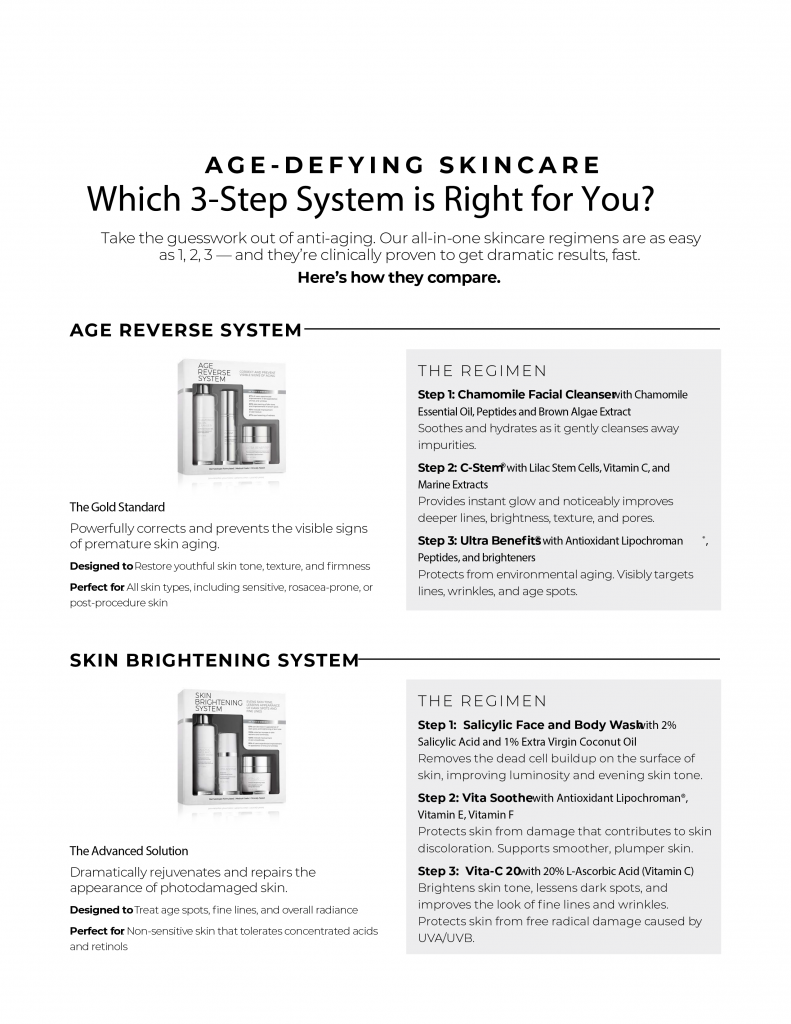HOW MALE SKIN IS DIFFERENT
Ultimately, men’s and women’s skin concerns are quite similar, but research shows there are some intrinsic (physiological) and extrinsic (environmental) factors that can uniquely influence men’s day-to-day skincare needs. Chief among these are androgens, a group of sex hormones which includes testosterone. Produced at a much higher level in the male body, androgens play a role in everything from skin thickness to fat distribution and reproductive development.
In comparison to female skin, male skin tends to present with the following characteristics:
- Thicker skin layer (about 25% more)
- Denser collagen and elastin fibers
- Larger pore size
- More sweat gland activity
- Less trans-epidermal water loss
- Increased sebum production
- Higher number of hair follicles on the face
- Thicker and coarser facial hair
- More gradual intrinsic skin aging overall; except
- Higher likelihood of sagging in the under eye area
- Statistically higher incidence of UV-related damage with age
In short, men struggle less frequently with moisturization, hydration, and early signs of aging; however, they’re more likely to need solutions for oily skin, clogged pores, photoprotection, and shaving-related issues.
ADDRESSING KEY CONCERNS
The ideal regimen for men will generally focus on cleansing, clarifying, skin repair, sun protection, and eye rejuvenation.
Oily/Combination Skin
Cleansing is the foundation of any skincare routine. Unfortunately, many products designed for oily skin contain harsh ingredients that strip the moisture barrier, which often leads to even more grease.
Avoid this by using a non-irritating, sulfate-free formula like the Chamomile Facial Cleanser to cleanse excess oils and impurities without depleting the skin.
Maintaining hydration also helps keep the skin balanced, but oil-prone skin types are easily weighed down by more emollient moisturizers.
Blackheads, Pimples, and Body Acne
While women are more prone to hormonal acne, men’s increased oil and sweat production makes their skin more prone to blackheads and pimples on multiple areas of the body.
Daily cleansing with a salicylic acid formula, like the allover Salicylic Face & Body Wash, will help prevent breakouts by penetrating into the pores and clearing the gunk, leaving skin fresh and clear.
For a more intensive treatment, use Dual Action Toner Pads, which combines both salicylic acid (BHA) and glycolic acid to tackle active and emerging acne breakouts.
Pore-Clogging Buildup
Dead skin cells like to build up on the skin, leaving it rough, bumpy, and congested. (This is especially common in areas covered by facial hair.) In oily/acneic skin, this layer can block the pores, mixing with sebum to create a breeding ground for acne bacteria.
Resurfacing products like our Glycolic Pads provide AHA exfoliation ideal for removing the dead skin and preventing buildup.
Razor Rash (Post-Shave Irritation)
Razor rash is bumpy, irritated skin caused by the physical friction of the shaving blade combined with the drying alcohols and harsh ingredients often found in shaving products.
To help prevent this, keep the surface of the skin smooth using regular AHA exfoliation with Glycolic Pads. Stick with an emollient, fragrance-free shaving foam or cream, and shave only when skin is completely wet.
Clients whose razor burn is accompanied by itching or dryness can add Ultra Benefits® for non-comedogenic moisture.
Razor Bumps (Folliculitis, Ingrown Hairs)
Shaving can also lead to pimple-looking bumps caused by inflamed follicles and/or hairs trapped under the skin. These razor bumps do not occur immediately afterward, appearing instead as the hair begins to regrow.
As with razor rash, pre-exfoliating with AHA is beneficial for razor bumps. Regular resurfacing with Glycolic Pads maintains smoother skin, which helps reduce follicle damage and allows hairs to emerge easily from the skin without getting trapped. For more coverage or more acne-prone skin, step it up with the combined AHA and BHA in our Dual Action Toner Pads.
Baggy Undereyes
The undereye area in both sexes has thinner skin with less oil glands than the rest of the face, leaving it more susceptible to signs of aging or exhaustion. Men in particular have been shown to present with significant loss of firmness in this area as they get older.
No matter their age, male clients can fight eye bags by applying Ultra Firming Eye once or twice a day.
Sun Damage
Studies have proven that skin cancer occurs more frequently in men. Compared to women of the same age, men aged 65 are twice as likely to develop melanoma. By the time they reach age 80, that risk goes from double to triple.
The #1 defense against UV damage is a broad-spectrum sunscreen, like our Ultra Replenishing Sunscreen SPF 40, which protects against UVA/UVB rays along with digitally-emitted blue light (HEV) and harmful pollutants.
Fortifying with antioxidant vitamin C offers another layer of defense. Vitamin C neutralizes free radicals on the skin to help fight DNA damage that leads to inflammation, hyperpigmentation, and cancer. Serums like C-Stem® are most effective, but Vita-C 20 is another easy-to-use option.
